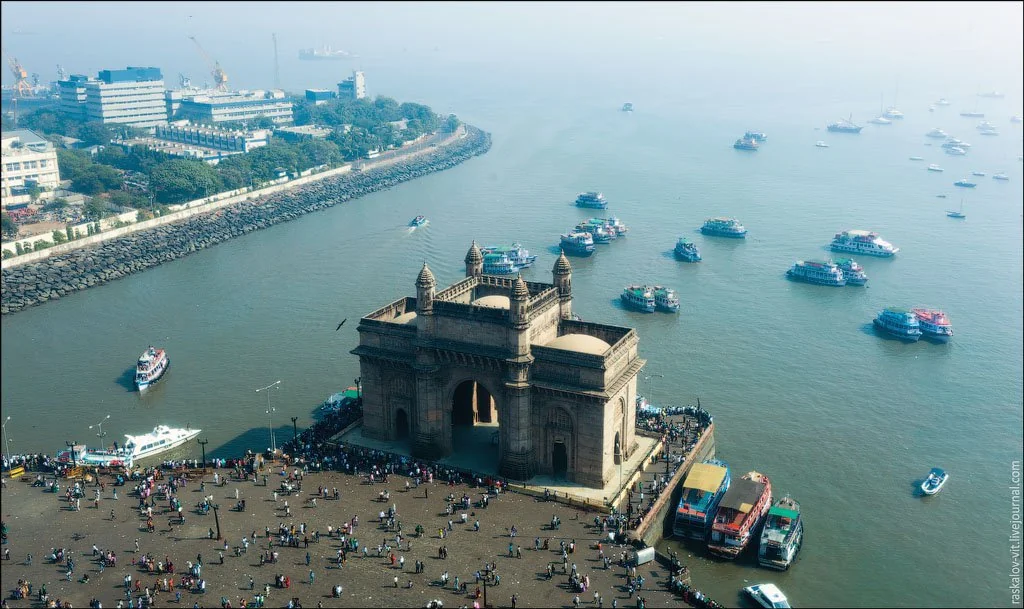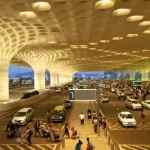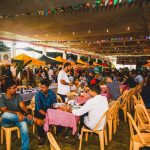A Guide to Creating the Ideal Mumbai Itinerary Over the Course of Three Days
Have you ever wondered how to experience the wonderful turmoil and cultural diversity that Mumbai has to offer in just three days? Mumbai, which is frequently referred to as the “City of Dreams,” is a melting pot at the intersection of modernism, history, and culture. Famous landmarks, bustling markets, and serene beaches are just some of the things that this city has to offer its visitors. However, because there is so much to see and do in Mumbai, planning your trip there can feel overwhelming, particularly if this is your first time spending time there. Don’t let your stress get too much. The purpose of this book is to provide you with all the information you require to make the most of your three days in Mumbai.
The Things That You Should Anticipate from Mumbai
The city of Mumbai is a metropolis of strong contrasts. While on the one hand, you will come across dazzling structures, luxurious hotels, and high-end dining establishments. There are also lively neighborhood markets, street sellers, and small roads that are located in the opposite direction. The city features a diverse assortment of foods, languages, and civilizations, and it is characterized by its rapid speed, chaos, and great variety.
For first-time visitors, Mumbai may initially appear to be frightening; yet, the city also offers a lot of satisfaction. Whether you are interested in traveling to historical places, eating street food, or simply taking in the dynamic vibrancy of the city, Mumbai is certain to provide you with an unforgettable experience.
Notes on Traveling Considerations
Visit Mumbai at the Perfect Time of Year
The city of Mumbai has a tropical climate, which means that it is warm and humid for the most of the year. A trip would be most enjoyable between the months of November and February, when the temperature is more bearable and the atmosphere is more pleasant. The monsoon season, which begins in June and lasts until September, should be avoided because it can cause travel plans to be disrupted by significant rain.
An Explanation of How to Get to Mumbai
It is possible to go to Mumbai via road, train, and air. To get to the city, one could take the following route:
Chhatrapati Shivaji Maharaj International Airport, which is one of the busiest airports in India, is home to flights that originate from major cities all around the country.
A significant number of trains arrive in Mumbai from all around India, making it a major railway hub. For tourists, the Chhatrapati Shivaji Terminus (CST) is a convenient and historically significant location. From Mumbai, long-distance buses travel to the towns and states that are located in the surrounding area.
The rules for visas
For the majority of foreign travelers, a visa is required to enter India. Take the necessary steps to apply for a tourist visa or an electronic visa in advance. One is able to complete the straightforward process online.
Information That You Ought to Be Aware Of

The Indian Rupee (₹) is the financial unit that is utilized in Mumbai. Even while credit and debit cards are frequently accepted, it is still a good idea to bring some cash with you for making little purchases, especially when you are shopping at neighborhood markets or stopping at street sellers selling food.
Despite the fact that English and Hindi are also spoken to a certain extent, the official language within the country is Marathi. Because the majority of people who live in tourist sites are fluent in English and know the basics of the language, communication should not be difficult.
a proper protocol for tipping
Although they are not required, tips are frequently appreciated. In restaurants where the service charge is not included, it is usual to leave a tip of ten percent. It is customary for hotel personnel and taxi drivers to round up the fare or provide a small gratuity to the customer.
The Guideline for Safety
Visitors to Mumbai should exercise caution despite the fact that the city is generally safe for them to visit:
During the busiest times of the day, you should avoid congested areas.
It is especially important to be careful when storing your belongings in busy markets.
Make use of reputable travel applications such as Uber or Ola when you need a taxi.
A Guide to the Essentials of Packing
For the heat of Mumbai, bring clothes that are light and breathable. Shoes that are comfy to walk in should not be disregarded.
Be sure to use sunscreen, sunglasses, and a headpiece.
You can stay hydrated with the assistance of a water bottle that may be reused.
A Comparison Table of the Choices Available for Transportation in Mumbai
| Mode | Time Spent Traveling | Price (in Indian Rupees) | Level of Comfort | Availability |
| Local Train | 10 minutes to 30 minutes | 10 minutes to 50 minutes | Low | High |
| Taxi | 20 minutes to 60 minutes | 100-500 to 500 | Medium | High |
| Auto Rickshaw | 15 minutes to 45 minutes | 50-300 to 300 | Low | High |
| Metro | 10 minutes to 20 minutes | 10-40 minutes |
Making Your Way Around Mumbai Despite the fact that Mumbai’s public transit system is very extensive, it is possible for it to become crowded. An outline of the city’s layout is provided below for your convenience:
Local Trains are known to be packed during times of high demand since they are both quick and affordable. Excellent for budget-conscious vacationers.
Taxis are convenient and comfortable, despite the fact that traffic may be congested. Using Uber or Ola, you may get rides without any fuss.
The charge for an auto rickshaw should be negotiated before the trip begins. Auto rickshaws are great for traveling small distances.
Although it is inexpensive and rapid, the Metro only serves a few routes. Visit the Historic Core of South Mumbai on the First Day of Your Trip. Colonial history and legendary sites will be discussed this morning.
Begin your tour around Mumbai by visiting some of the city’s most well-known landmarks. If you want to stand out from the crowds, get up early!
The Gateway of India, an arch construction that dates back to the 20th century, serves as the ideal introduction to the history of Mumbai. Make sure to save this for Day 3; you can take pictures, see street artists, or make arrangements for a short ferry ride to Elephanta Caves.
In addition to the Taj Mahal Palace Hotel, The design of this luxurious hotel, which is located close to the Gateway, is a fusion of European and Indian styles. Be sure to stop in for a cup of coffee and take in the beauty of the building from the outside.
Museums and Local Delectables in the afternoon
The Chhatrapati Shivaji Maharaj Vastu Sangrahalaya (CSMVS Museum) is a place where you may view artifacts that date back to ancient India. The cost of entrance for non-Indians is ₹100. A helpful hint: If you want to bypass the audio guide, the exhibits are well labeled.
It is recommended that you have lunch at Colaba Mondegar, which is a retro Colaba institution that serves burgers, sandwiches, and Indian staples. The 250 masala fries are worth trying.
As the sun sinks beyond the horizon of the Arabian Sea, take a leisurely stroll along this crescent-shaped promenade and indulge in some delicious street food. Due of the magnificent lights that illuminate it at night, the locals have referred to it as the “Queen’s Necklace.”
Chowpatty Beach is the perfect place to round off your day with some of the most famous street food in Mumbai. It is necessary to try:
- Pani Puri is a dish consisting of shells that are crisp and filled with tamarind water that is spicy. The cost for six pieces is ₹50.
- Pav Bhaji, priced at ₹120, are soft bread rolls that are topped with veggies that have been mashed with butter.
On Day 2, we will discuss local culture, spirituality, and life.
Every day, hundreds of people visit this temple, which is dedicated to Lord Ganesha and has the phrase “Morning: Temples & Spiritual Vibes.” Get here at seven in the morning to avoid waiting in line. Cover your legs and shoulders and dress in a conservative manner.
The Haji Ali Dargah is a mosque made of white marble that is located on a tiny island. When the tide is low, you can walk across the causeway.
In the afternoon, a look behind the scenes in Mumbai The Dhobi Ghat is the largest outdoor laundry facility that can be found anywhere in the globe. When viewed from the footbridge of Mahalaxmi Station, row upon row of people cleaning clothing is the most visible sight.
Dharavi Slum Tour is a guided tour that lasts for three hours and costs between ₹800 and ₹1,500. It offers a glimpse into the entrepreneurial spirit that exists in Mumbai. though controversial, it sheds light on the situation.
The beach in Juhu is a recommended lunch spot. A quick bite can be had from these stands. Both bhel puri (₹60) and sev puri (₹50) are worth a try.
There will be art, cafes, and coastal views in the evening. To get a perspective of the skyline, you can either drive or pedal across this engineering marvel.
You should explore around Ranwar Village for street art that is worthy of being posted on Instagram.
Candies Café is a one-of-a-kind establishment in Bandra that offers salads, desserts, and coffee for prices ranging from ₹300 to ₹500 per person.
Day 3 will consist of caves, shopping, and nights spent in Mumbai.
Early in the morning: the ancient Elephanta Caves
The UNESCO-listed rock-cut temples can be explored on a ferry excursion that lasts for one hour, departing from Gateway of India (a round-trip ticket costs ₹240). In order to reach the caverns, you will need to climb to the top of 120 steps. For international guests, the entry fee is ₹600.
In the afternoon, you should shop like a local. The Colaba Causeway is a good place to look for bohemian clothing, jewelry, and other curiosities. Strive to get a better deal; begin at fifty percent of the price that is listed!
A market that dates back to the Victorian era that sells spices, tea, and mangoes (depending on the season), Crawford Market
There is a seafood story from Fort called Trishna. Either the butter garlic crab (₹1,800) or the prawn curry (₹1,200) is the option to consume.
When the sun goes down in Mumbai, head to clubs such as Social or Aer to enjoy a cocktail and some music (cover charges range from ₹1,000 to ₹2,000).
Asilo, located in the Palladium Hotel, offers a relaxed ambiance, while Dome, located in the InterContinental, offers views of the skyline.
The Comparison Table for Mumbai’s Attractions

| Attraction | Price (in Indian Rupees) | The Best Time to Visit | Experiences That You Absolutely Must Try |
| Siddhivinayak Temple | free | Six to eight o’clock in the morning on weekdays | morning prayers (aarti) |
| Colaba Causeway | free with admission | eleven o’clock in the morning to seven o’clock in the evening | bargain shopping and street snacks |
Try Ashok Vada Pav, which is located close to CST and costs ₹25. The “burger” of Mumbai may be found here.
Creamy Indian ice cream known as Kulfi can be purchased at K. Rustom’s in Churchgate for the price of ₹70.
There are cafes in Iran that offer filtered coffee, such as Kyani & Co., which costs sixty rupees.
In the interest of those who enjoy trying new things:
- You should try the well-known seekh kebabs (₹300) at Bademiya (Colaba) at 10 o’clock at night, which is when the street-side grill starts operating.
- Bombay Duck Fry is a dish that is served at Mahesh Lunch Home (Juhu) and is a native seafood dish. Slightly spicy and snappy (₹450).
Beloved by Vegetarians:
- Shree Thaker Bhojanalay (Kalbadevi) is a Gujarati thali restaurant that has been around for one hundred years and charges ₹350 for unlimited servings.
- In Fort, traditional sweets such as gulab jamun, which costs ₹50 for two pieces, are considered to be puranmal vegetarian.
Cost-cutting Methods and Solutions
Free attractions include the historic stepwell known as Banganga Tank, the ruins of Bandra Fort, and treks along Marine Drive.
Local passes are: You can ride unfettered on Mumbai’s famed red buses by purchasing a daily BEST bus pass for the price of ₹50.
There are certain museums that provide discounted tickets for groups, such as the CSMVS and the Prince of Wales Museum.
Table of Extended Comparisons: Attractions; Price (in Indian Rupees)
| Attractions | Price (in Indian Rupees) | Perfect Moment to Discover | Secret Tip |
| a free market for chor | free | Sundays between the hours of 10 AM and 6 PM (closed) | For vintage Bollywood posters, visit the “Noor Mohammadi” booth and make your request. |
| Caves number 85 along the Kanheri | Between the hours of 8:00 and 11:00 AM | Take water with you; there are no water stores inside! | |
| Cost-free | 5:30 to 6:30 p.m. | Village for Fishing in Worli Speak with fisherman who narrate stories about the sea for free. |
Behavior on the Local Level
It is important to obtain permission before taking photographs of individuals, especially when doing so in sacred environments.
During your visit to the Siddhivinayak Temple, you should present Lord Ganesha with a coconut that costs twenty rupees.
The Hygiene of Street Food: When it is rainy, you should avoid eating raw vegetables and instead go for booths that have a lot of turnover, which means they sell fresh food.
We offer a two-hour private dhp (traditional boat) tour on the Arabian Sea, which may be reserved via Gateway of India for a fee of ₹2,000 per person. Includes a selection of appetizers and views of the skyline of Mumbai.
It is midnight in Mumbai:
- K. Rustom’s Ice Cream on Churchgate is open till one in the morning. Experience the legendary flavor of sitaphal, also known as custard apple, which costs ₹90.
- Drive of the Marineer At this late hour: Join the locals at Stadium Restaurant, which is open around the clock, for a half-glass, or “cutting,” of tea.
If you adhere to this plan for Mumbai, you will be able to experience the city’s rich history, culture, and diverse cuisine without missing a beat. It doesn’t matter if you’re negotiating at markets or sipping chai by the water; the excitement of Mumbai will completely captivate you!
Tips for Traveling and Important Information to Remember Plan of action for a stress-free Mumbai: Safety Advice for a Mumbai Community Despite the fact that Mumbai is mostly safe, maintaining vigilance ensures a more pleasant journey:
- After nightfall, you should avoid going to secluded regions and instead stay in areas that are well-lit and filled with people, such as Marine Drive or Bandra.
- Ensure safety Your Personal Property: In crowded markets (like the Colaba Causeway), it is important to keep your phones and wallets close at hand and to utilize anti-theft backpacks.
- The Only Transport You Can Trust: Use Uber or Ola to make reservations for late-night travel. Stay away from taxis that are not visible.
- Names of People to Contact in an Emergency: Please save the following local numbers: 1363 for the tourist helpdesk; 100 for the police.
- Keep a photocopy of your passport on you at all times and leave the original in the safe of your hotel.
How to Mix Like a Local Dress is an Example of Cultural Etiquette In a humble manner: Cover your knees and shoulders when you are in a mosque, such as Haji Ali Dargah, or a temple, such as Siddhivinayak.
Instructions for Men’s Footwear: It is recommended that you change your shoes before entering any holy places or dwellings. Bring socks with you so that you can avoid getting your feet on the warm flooring!
A primer on bargaining: If you are at the market, barge gently. Beginning at fifty percent of the price that is quoted, meet halfway.
Having Respect for Photography: Do not take photographs of people without first obtaining their permission, especially in Dharavi or Worli Village.
Guidelines for the Survival of Food Sold on the Street: Consume in the Busy Stalls: A high turnover rate requires food that was produced more recently.
Unfavorable During the monsoon season, you should avoid eating raw vegetables. Stick to dishes that have been prepared, such as pav bhaji or vada pav.
Comparative Table: Travel and Schedule Tips – Advantages and Disadvantages Recommended for Local Trains
| Advantages | Disadvantages | Recommended for | |
| Local Trains | Low-cost (₹10-50) | Rapidly crowded, and without air conditioning | Those who are traveling on a limited budget and for shorter journeys |
| Uber | door-to-door private Uber ride with air conditioning comfort (at least ₹500) | The late-night excursions of families | |
| A Ride on Fruit | The views of the landscape, such as the Elephanta. | Itineraries that are restricted | |
| Free, engrossing, and immersive tours of walking tours | Free, engrossing, and immersive tours of walking tours are offered throughout the morning hours of exploration. | Due to the heat and exhaustion, cultural depth-diving |
Scheduling Travel Itineraries: Striking a Balance
Early visits to well-known locations, such as the Gateway of India, have the potential to assist visitors escape crowds during peak hours.
Hidden Treasures: If you want to avoid the crowds of tourists on the weekends, use Kanheri Caves instead of Elephanta Caves.
To What Extent Will You Remain in Mumbai? When planning a vacation to Mumbai, it is not enough to simply visit the city’s attractions; rather, it is important to get a feel for the city’s pulse. The scorching tang of pani puri at Chowpatty and the reverberating prayers at Haji Ali at Haji Ali are just two examples of the paradoxes that Mumbai has to offer. When you leave Juhu Beach, you will have sandy toes, hands smeared with ink from the transactions you made at Chor Bazaar, and a photo roll full with sunsets over the Arabian Sea.
Not only does Mumbai show you India, but it also puts you in the middle of its pulse. Allow the bustle of the city to direct your actions, whether you are participating in a party at a bar in Lower Parel or having chai with fishermen from Worli. The people of Mumbai are heard to exclaim, “Yeh sheher nahi, mehfil hai!” As opposed to being a city, this is more of a festival.
Tips for Traveling and Important Information to Remember Plan of action for a stress-free Mumbai: Safety Advice for a Mumbai Community Despite the fact that Mumbai is mostly safe, maintaining vigilance ensures a more pleasant journey:
- After nightfall, you should avoid going to secluded regions and instead stay in areas that are well-lit and filled with people, such as Marine Drive or Bandra.
- Ensure safety Your Personal Property: In crowded markets (like the Colaba Causeway), it is important to keep your phones and wallets close at hand and to utilize anti-theft backpacks.
- The Only Transport You Can Trust: Use Uber or Ola to make reservations for late-night travel. Stay away from taxis that are not visible.
- Names of People to Contact in an Emergency: Please save the following local numbers: 1363 for the tourist helpdesk; 100 for the police.
- Keep a photocopy of your passport on you at all times and leave the original in the safe of your hotel.
How to Mix Like a Local Dress is an Example of Cultural Etiquette In a humble manner: Cover your knees and shoulders when you are in a mosque, such as Haji Ali Dargah, or a temple, such as Siddhivinayak.
Instructions for Men’s Footwear: It is recommended that you change your shoes before entering any holy places or dwellings. Bring socks with you so that you can avoid getting your feet on the warm flooring!
A primer on bargaining: If you are at the market, barge gently. Beginning at fifty percent of the price that is quoted, meet halfway.
Having Respect for Photography: Do not take photographs of people without first obtaining their permission, especially in Dharavi or Worli Village.
Guidelines for the Survival of Food Sold on the Street: Consume in the Busy Stalls: A high turnover rate requires food that was produced more recently.
Unfavorable During the monsoon season, you should avoid eating raw vegetables. Stick to dishes that have been prepared, such as pav bhaji or vada pav.
Comparative Table: Travel and Schedule Tips – Advantages and Disadvantages Recommended for Local Trains
| Transportation Option | Advantages | Disadvantages | Recommended for |
| Local Trains | Low-cost (₹10-50), Rapidly crowded | Rapidly crowded, and without air conditioning | Those who are traveling on a limited budget and for shorter journeys |
| Uber | door-to-door private Uber ride with air conditioning comfort (at least ₹500). Congratulations on your door-to-door private Uber ride with air conditioning comfort (at least ₹500) | The late-night excursions of families | |
| A Ride on Fruit | The views of the landscape, such as the Elephanta. Itineraries that are restricted | Itineraries that are restricted | |
| Free, engrossing, and immersive tours of walking tours | Free, engrossing, and immersive tours of walking tours are offered throughout the morning hours of exploration. | Due to the heat and exhaustion, cultural depth-diving |
Scheduling Travel Itineraries: Striking a Balance
Early visits to well-known locations, such as the Gateway of India, have the potential to assist visitors escape crowds during peak hours.
Hidden Treasures: If you want to avoid the crowds of tourists on the weekends, use Kanheri Caves instead of Elephanta Caves.
To What Extent Will You Remain in Mumbai? When planning a vacation to Mumbai, it is not enough to simply visit the city’s attractions; rather, it is important to get a feel for the city’s pulse. The scorching tang of pani puri at Chowpatty and the reverberating prayers at Haji Ali at Haji Ali are just two examples of the paradoxes that Mumbai has to offer. When you leave Juhu Beach, you will have sandy toes, hands smeared with ink from the transactions you made at Chor Bazaar, and a photo roll full with sunsets over the Arabian Sea.
Not only does Mumbai show you India, but it also puts you in the middle of its pulse. Allow the bustle of the city to direct your actions, whether you are participating in a party at a bar in Lower Parel or having chai with fishermen from Worli. The people of Mumbai are heard to exclaim, “Yeh sheher nahi, mehfil hai!” As opposed to being a city, this is more of a festival.




No responses yet